Planning your John Muir Trail itinerary is one of the hardest parts of the whole adventure. It can be as frustrating as climbing the Golden Staircase after a long, hot day. Or groaning through the knee-jolting descent from Mount Whitney… but also just as rewarding.
I was incredibly spoiled by my thru-hiking badass of a dad, who hiked the John Muir Trail in 2015. Not only had he agreed to hike the trail again with me in 2019. He actually did 99% of the route planning. And he did an amazing job! For months, he tweaked the map to maximize our mileage and enjoyment of the scenery, while hitting the best resupply locations and prettiest campsites.
Here’s our full 2019 JMT itinerary, Sobo from Tuolumne. (Sobo means southbound, the most popular direction starting in Yosemite and going south to Mount Whitney.)
We started our hike in Yosemite’s Tuolumne Meadows, 20 miles from the official start of the trail at Happy Isles in Yosemite Valley, and ended at Whitney Portal.
Since I’d already done the Happy Isles > Tuolumne portion of the trail before on other trips, including Half Dome, I wasn’t too upset about missing it. I could do without the long, hot climb out of the Valley and into the high Sierra.
Tuolumne Meadows is slightly easier to get permits for than Happy Isles. It also helps you avoid the craziness of Yosemite Valley in summertime.
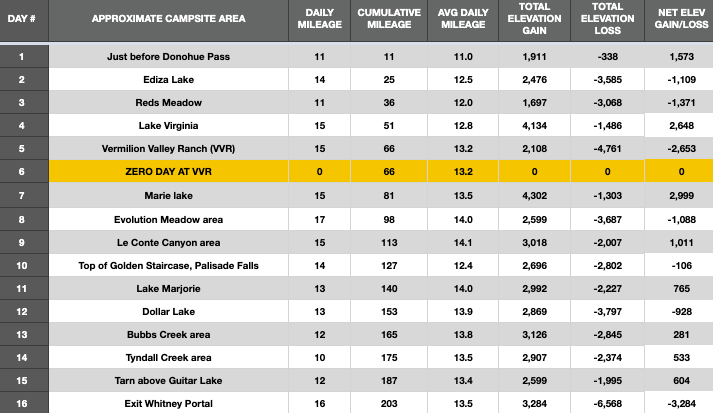
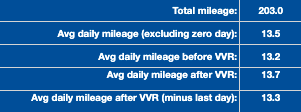
We planned for 16 days on the trail. This included one zero day (a planned rest day with no mileage) at Vermilion Valley Resort on Day 6. We averaged almost 14 miles a day with 3,000 feet of elevation gain/loss.
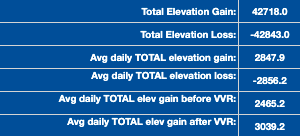
In my experience, 16 days is perfect for hikers with limited vacation time who still want to enjoy themselves. It’s aggressive but not too aggressive if you’re fit, even if you haven’t thru-hiked before.
Most hikers on the trail were hiking at a more leisurely pace. Many were averaging ~10 miles a day or less and planning to be out for 20-30 days total. We also met some who were averaging 20+ daily miles and planned to finish the entire trail in a week. (The JMT speed record is 2 days, 19 hours, and 26 minutes!)
As the least experienced long-distance hiker in our group, I worried about struggling to keep up. And I did end up hiking at the back of the group most of the time. But as it turns out, I preferred it that way. It meant I could go my own pace, take as many photos as I wanted, and soak in the solitude. Thankfully my group was kind enough to wait for me for lunch each day, and I never felt rushed.
We’d typically start hiking by 7:30am, and hike until lunch around 11:30 or whenever we found a scenic spot to sit. Then we’d hike until we reached our planned camp area around 3-4 in the afternoon. We’d arrive sore, tired, and ready to stop, but still able to hike farther if necessary.
That pace always left us with enough sunlight for a delightful evening routine. Packs down, tents up, a swim/ice bath in an alpine lake, a load of laundry in the creek, “library hours” with our JMT field guides, and a leisurely dinner/dessert before sunset and bed (which are often the same thing on the trail.)
My personal ideal pace is probably closer to 11-12 miles a day, with even more time to relax at camp each night or at lakes along the way. I’d love to schedule a few more zero days to lounge with a book or do one of the infinite side trips listed in Elizabeth Wenk’s John Muir Trail Guide.
But the longer your trip the more food you have to carry, and the more vacation time you have to take. I’d hike this exact same itinerary again in a heartbeat.
Thanks to my dad, Kent, for planning our John Muir trip so beautifully and for being the best hiking partner I could ever ask for!
For more detail, see the full Caltopo map of our route. You can also check out my blog posts covering everything I packed for the JMT, everything I ate along the way, and all the books I read to get excited for the trip.
Questions about my John Muir Trail itinerary or about the hike in general? Let me know below! I miss it every day.
Pin this for later:

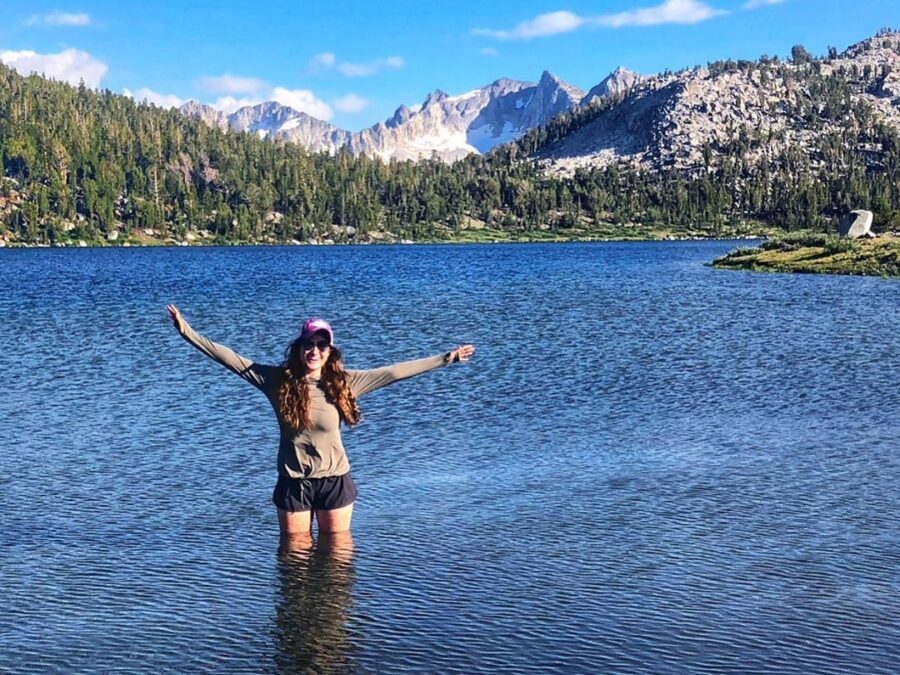
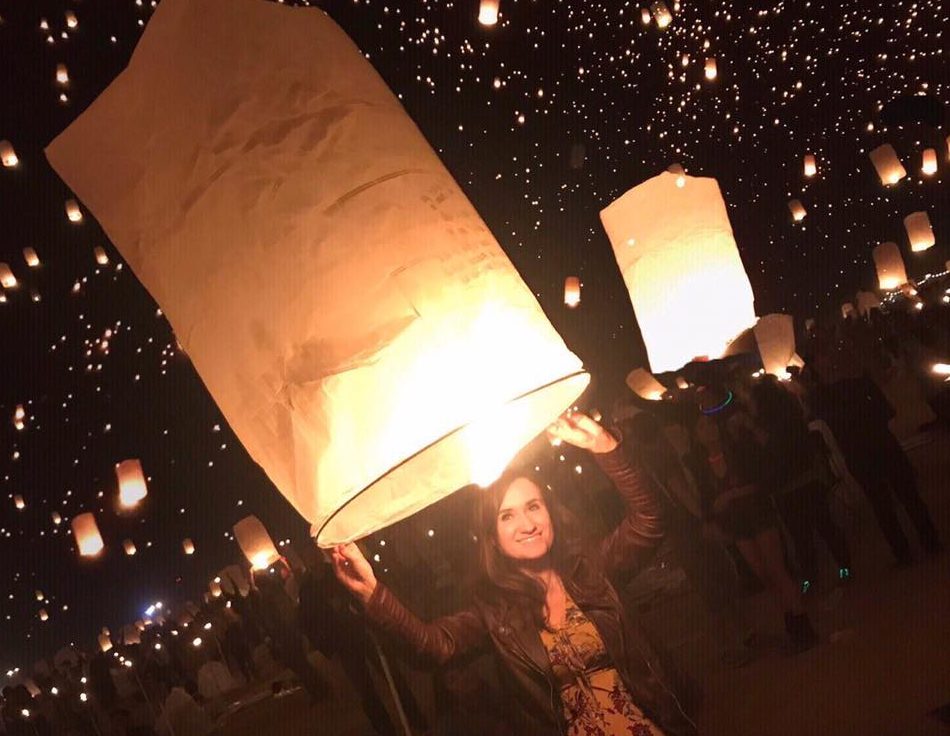
1 Comment
Leave your reply.